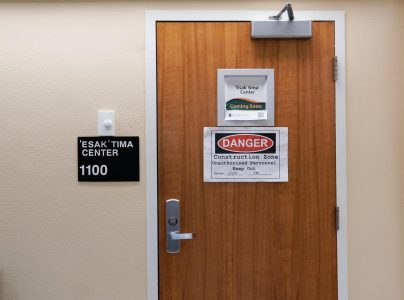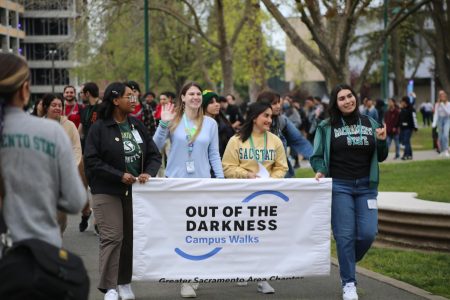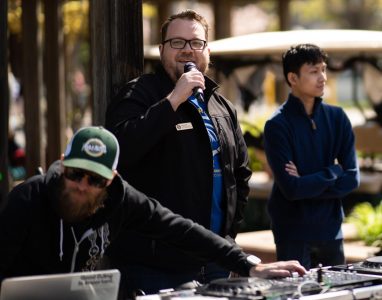Sac State close to becoming a Hispanic Serving Institution
March 5, 2014
With 15 California State Universities designated as Hispanic-Serving Institutions, Sacramento State is only three percent away from being awarded the status.
“It’s an aspiration for Sac State to become a Hispanic-Serving Institution,” said Associate Vice President for student retention and academic success Marcellene L. Watson-Derbigny.
According to Title IV of the Higher Education Act, an HSI is an institution of higher learning with a 25 percent Hispanic full-time undergraduate student enrollment rate.
HSI members are accredited, non-profit universities that must have minimum two-year academic programs and 50 percent of the student population must be eligible for Pell Grants.
Although close to eligibility, Sac State still needs to meet 25 percent of Hispanic full-time enrollment and maintain that percentage for three consecutive years.
President Alexander Gonzalez said he is focused on making sure Sac State is ready to serve the growing diversity of students and community.
“Becoming a Hispanic-Serving Institution would enhance Sacramento State’s reputation as a campus that takes pride in recruiting and enrolling a very diverse student body,” Gonzalez said.
If Sac State becomes an HSI, it would be eligible to receive large grants offered by the U.S. Department of Education ranging from $400,000-600,000 or more a year. Over $2 billion have been awarded to HSIs.
Watson-Derbigny said eligibility would allow the campus to add academic support services such as supplemental instruction, tutoring and advising.
Even though the grants are designed to help advance the Hispanic student population, services cannot be denied to any student and can benefit the school as whole.
“There is a need to close the achievement gap in our campus,” Watson-Derbigny said. “Chicano-Latino students are the largest minority population on our campus, so there is clearly a need for us to be able to pursue those funds in particular to close the achievement gap.”
The Sac State fact book for fall 2013 shows a 22 percent enrollment rate for Latinos, compared to 21 percent Asian-Pacific, 6 percent African-American, 2 percent foreign and 1 percent American-Indian.
Director of the College Assistance Migrant Program Viridiana Diaz, is coordinating the effort to ensure Sac State becomes a Hispanic-Serving Institution.
Diaz said there is not a formal group working on the initiative, but soon the university will bring together staff, faculty and community members to develop a strong proposal.
“Right now we have several programs that focus on access, but it is difficult to retain and graduate students,” Diaz said. “Additional funding will allow us to focus on getting students to enter but also complete a college degree. I think it would be a wonderful opportunity to have the means to better support a population that continues to grow.”
The Hispanic Association of Colleges and Universities website shows there are 15 other CSU campuses recognized as Hispanic-Serving Institutions.
Diaz said most CSU HSIs have used grants to provide transitional support, tutoring, academic advising, internship opportunities and undergraduate research fellowships.
Ethnic Studies Professor Elvia Ramirez said Sac State might be behind from becoming a Hispanic-Serving Institution because of two factors.
One would be a reflection of the demographic concentration of Latinos and Latinas in Southern versus Northern California.
Another potential reason is Sac State has not been sufficiently aggressive in its recruitment and outreach to Latina/o students.
“I think we can certainly do more to reach out to the Latino/a community as a campus,” Ramirez said.
Within two years, the number of Latino students enrolled in the CSU system has doubled.
In fall 2000, there were 8,135 Latino freshmen enrolled in CSUs and the numbers increased to 23,046 by fall 2012 according to a profile of Latinos at Sac State by Diaz.
Diaz said demographic patterns are helping Sac State meet the 25 percent of Hispanic enrollment goal.
“I foresee Sac State becoming a Hispanic-Support Institution within the next five years,” Diaz said.
Student organizations such as Brown Issues are in support of Sac State becoming an HSI.
Brown Issues member Juan Diego Ochoa, said being eligible would allow the university to retain students longer and also increase graduation rates.
He said this would not only benefit students with additional resources, but it would also benefit the individuals who return to the job market with a college degree.
“I think this effort needs to be led with a partnership of staff and students,” Ochoa said. “I would like to see Hornets benefit from these resources.”








































































































































